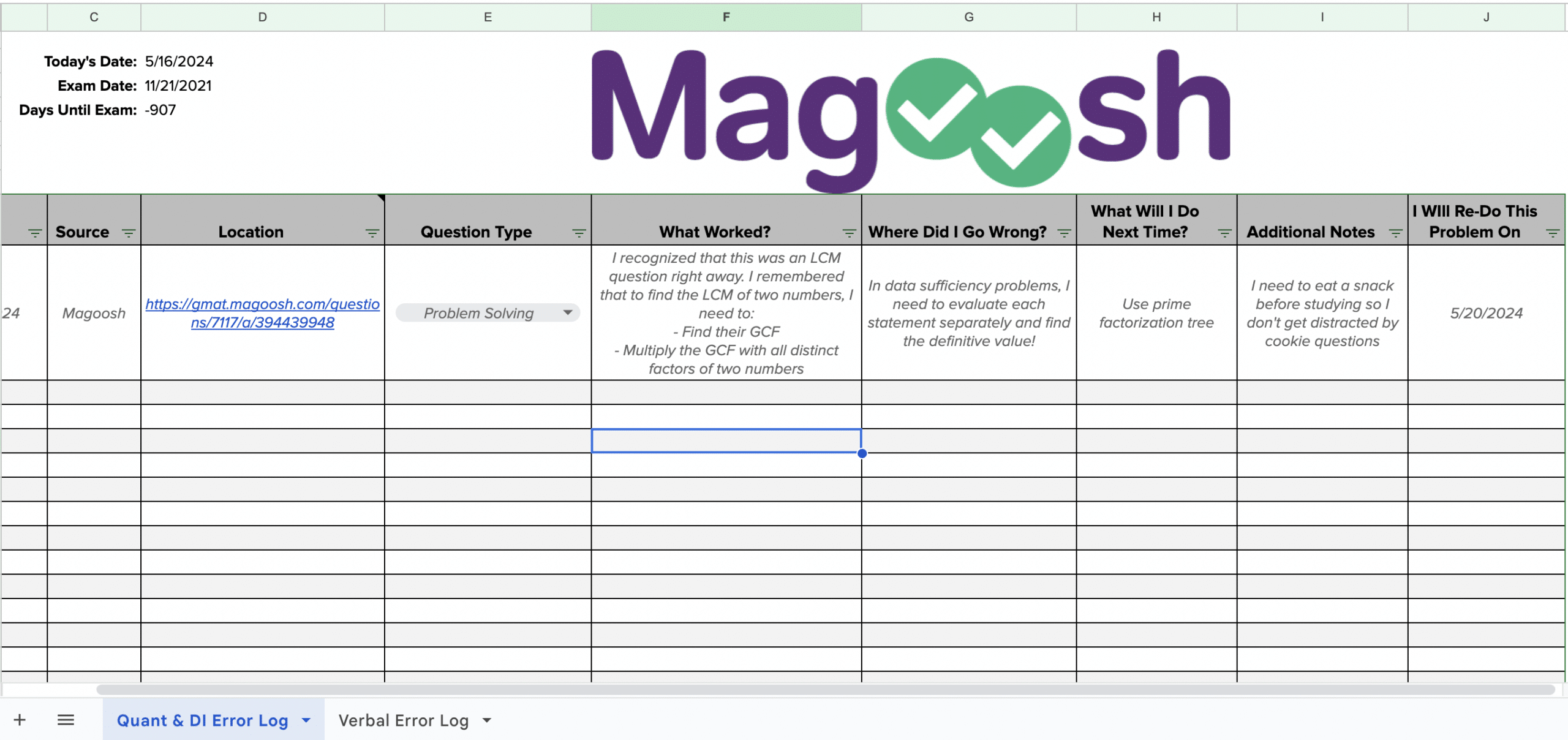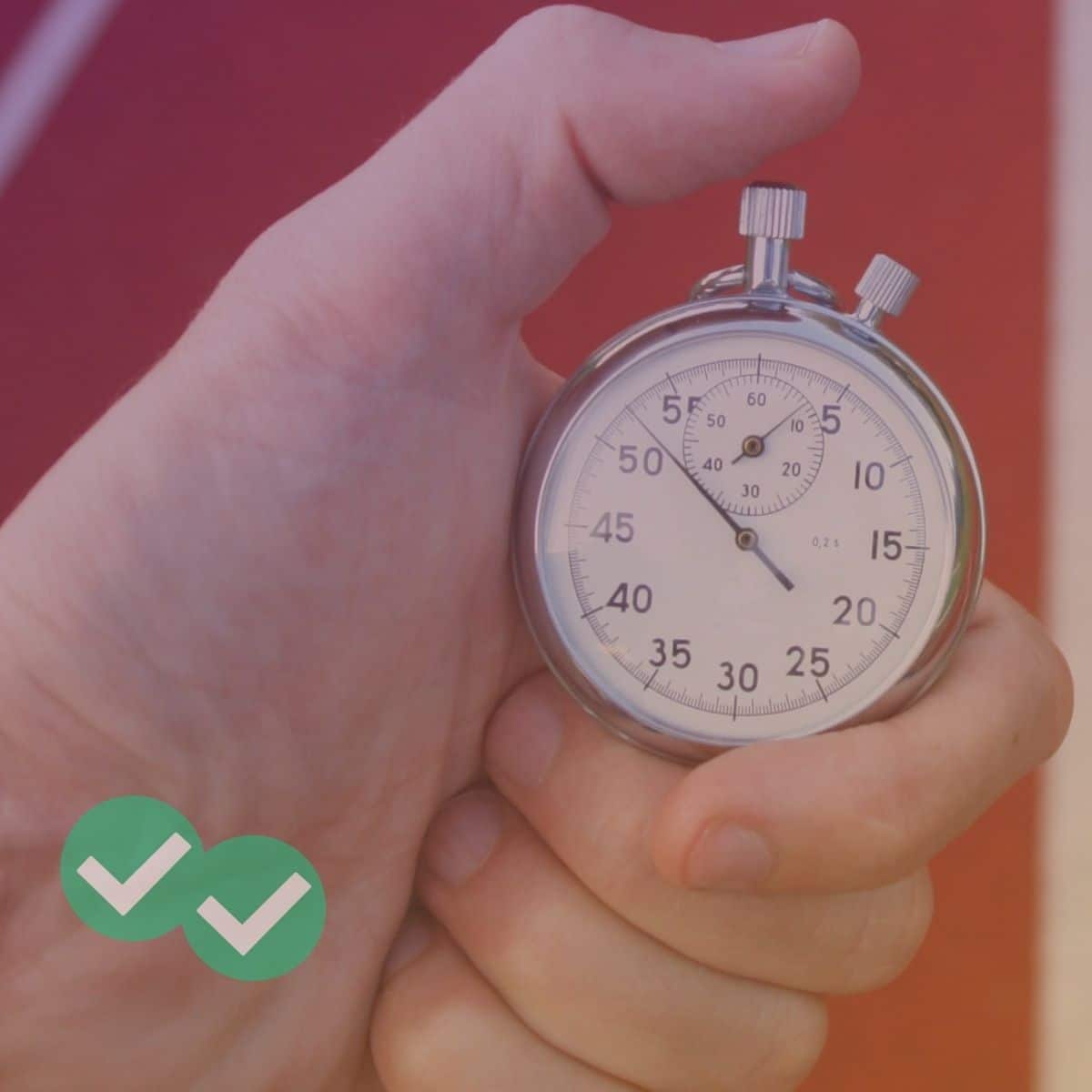
This post was updated in 2024 for the new GMAT.
Your GMAT journey will be challenging and rewarding. There will be highs and lows. Some days will build your confidence and then other days you will want to forget about completely. We have all had those days: you are studying and you feel like you can’t get any question right. But before you crumple up that paper, wipe clean that dry erase board, or power down that computer, STOP! Document your struggles and capture that data!
Why Keeping an Error Log is So Important
Our mistakes are full of information about our test taking abilities, strategies, and more importantly, our habits. Looking at your mistakes is helpful whether you’re studying for your first GMAT or preparing for a retake. A critical look at how we approach, solve, and check our work not only directs us to which areas we should study next. It also makes us conscious about the bad habits we exhibit every time we attempt a GMAT problem.
We are always told to review our questions after we complete practice problems and the best way to advance your skills is by using a GMAT Error Log! An error log turns your weaknesses into strengths by helping you to narrow in on parts of the test where you are losing points. Keeping track of your performance over time is critical to ensuring that you are spending your study time wisely. The beauty of a written error log is that you can can come back to your mistakes with fresh eyes, honing your performance based on trends you identify.
How to Use an Error Log
One major GMAT prep error!
GMAT prep is broken down into three parts: Content, Problem Solving, & Testing.
What have I consistently seen that keeps test-takers from earning their top score? They haven’t spent enough time in the Problem Solving stage. Test-takers would read 100% of the material and complete 4 to 5 practice exams, but would only successfully complete 20-30% of all the questions on Magoosh GMAT and even less when it comes to the Official Guide.
Knowing the ratios of a 30-60-90 triangle, how to FOIL, or what is a noun is important, but you must drill these topics in various various ways to really understand these concepts and how to answer these questions on the exam.
Taking practice exams in isolation will not improve your score. Careful review and reflection is where you will develop skills and earn points. Practice exams are a time investment and are extremely valuable, so you don’t want to waste too much time to only answer 30 or more random questions.
A strategy adopted by the most successful GMAT takers
One strategy I’ve seen high-scoring GMAT takers do is to drill mini problems sets (5, 8, or 10 questions) and use those as a sample to gauge their skill set. In these practice problems is where the GMAT Error Log shines!
Let’s say each day for a week, you complete 10 to 20 random problems of various question types and difficulties. You are bound to miss a few questions. What most people do when they get a question wrong is read the explanation, say “oh I got it,” and move on.
Here is where you leverage the GMAT Error Log. Not only will you read the explanation, you will also input the question you got wrong in the Error Log, what you did wrong, and what you will do differently next time.
This seems like a small task today, but in the beginning, it can feel very daunting. After about 20 or so questions, though, you will get into the habit of updating your error log and begin to see the fruits of your labor.
Leading up to a test day, a great Error Log can be your most beneficial review tool
When I work with my test-takers I teach them how to build a detailed Error Log with great care because it is those careless errors or habits that are written in the Error Log that jumps your GMAT score to that 645 and above score.
When you keep detailed, honest notes about your performance and weaknesses you are best prepared to improve. Understanding exactly what you are thinking and doing when you approach a problem is essential to correcting your mistakes. Looking at all of your mistakes can seem demoralizing at first, but over time you will see how the practice unlocks your highest potential.
How to Structure Your GMAT Log
Your Error Log does not need to have bells and whistles. It doesn’t need to be something with macros and automated graphic generators. It doesn’t have to be a spreadsheet or digital at all. I actually keep two logs – an old school black and white marble notebook and a digital copy.
The Error Log just has to fit your method of note-taking, be updated diligently, and have honest reflections.
Error Logs lose value when they are not updated. You only get out of the Error Log what you put in. I can never guarantee your score to improve, but I can say that having a running list of all your mistakes can help prevent you from making them again.
Here is the key information you want to have in any GMAT Error Log:
- The source and question number, type of problem, and the concepts being asked in the problem. These are your basic details that will help you notice patterns
- Next, write answers to some key questions:
- Why did you miss the question?
- Why was your answer wrong?
- Why was the correct answer correct?
- What will you do to avoid this next time around?
This sounds extremely simple, because it is – the challenging part is building and sticking to the habit.
After a few weeks, you will have an error log that you will cherish and will be excited to fill it up. So go out there and make some GMAT mistakes!
- Check out our GMAT expert’s suggestions on creating, reviewing, and maximizing your Error Log—so you never make the same GMAT mistakes more than once!
The error log in this post is designed to pair well with Magoosh GMAT Premium! Learn with over 200 video lessons and 800 practice questions to get ready for the GMAT. Get a year of access with Premium, or try us for free with a 1-week trial!







Leave a Reply